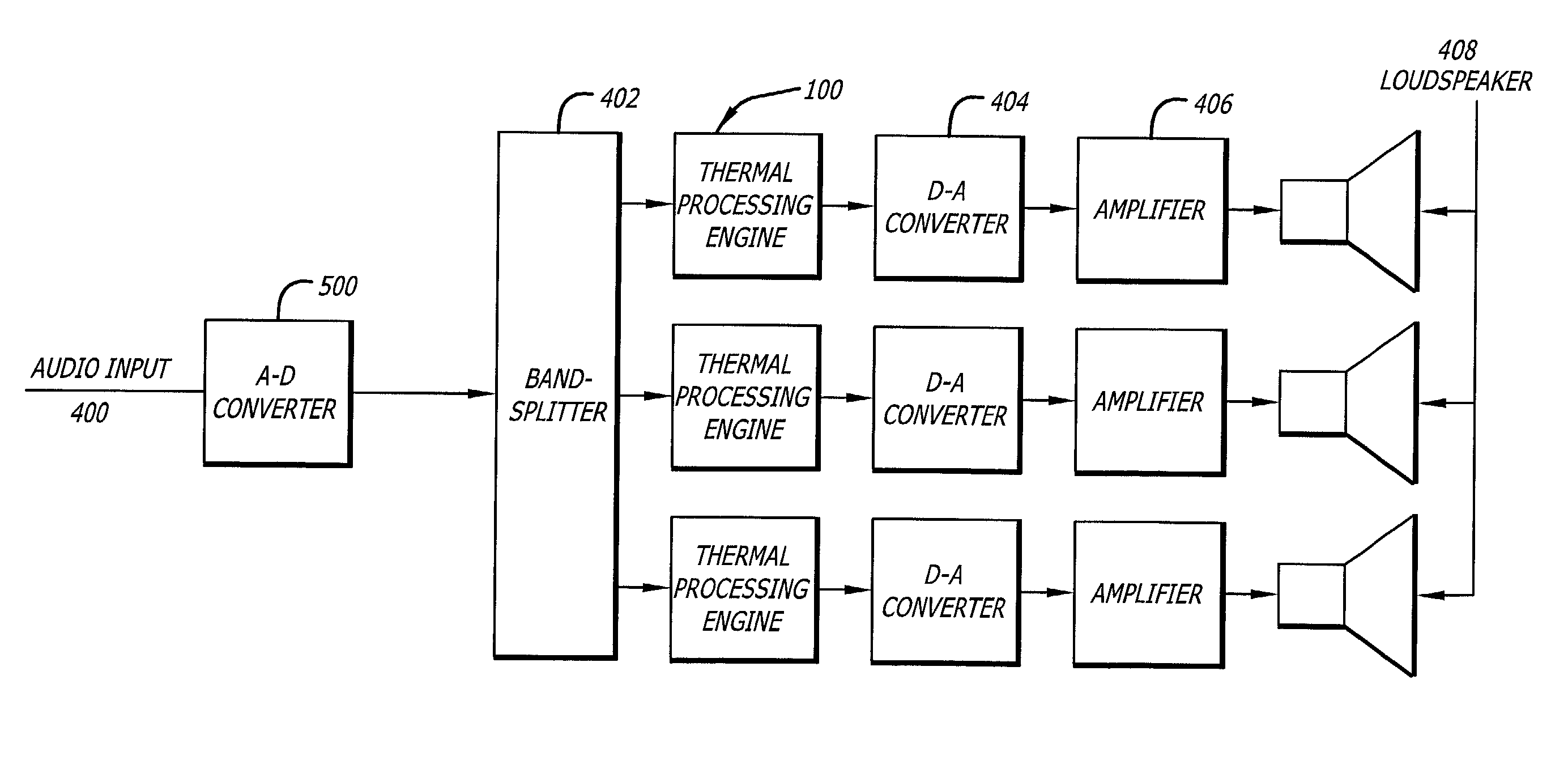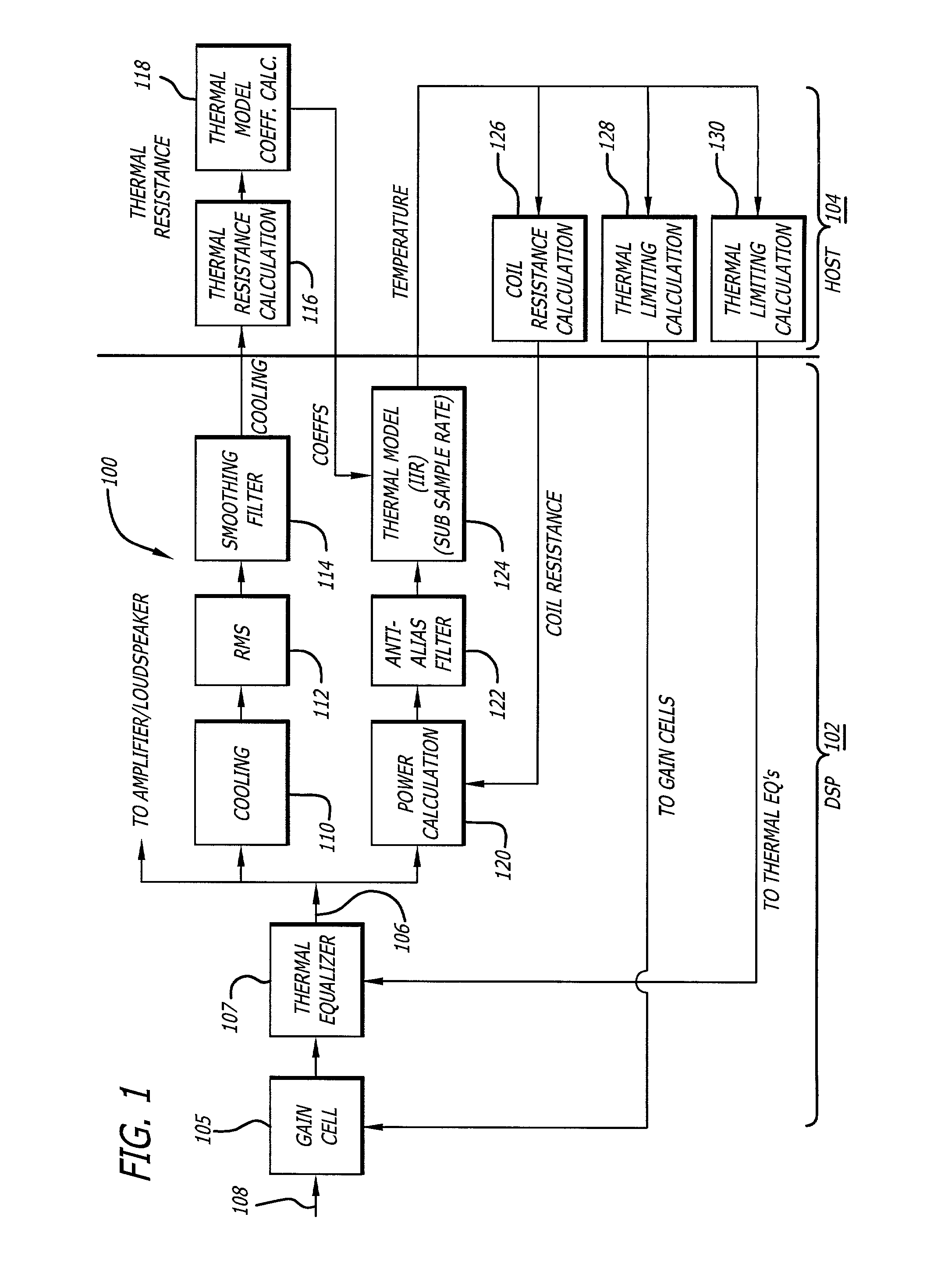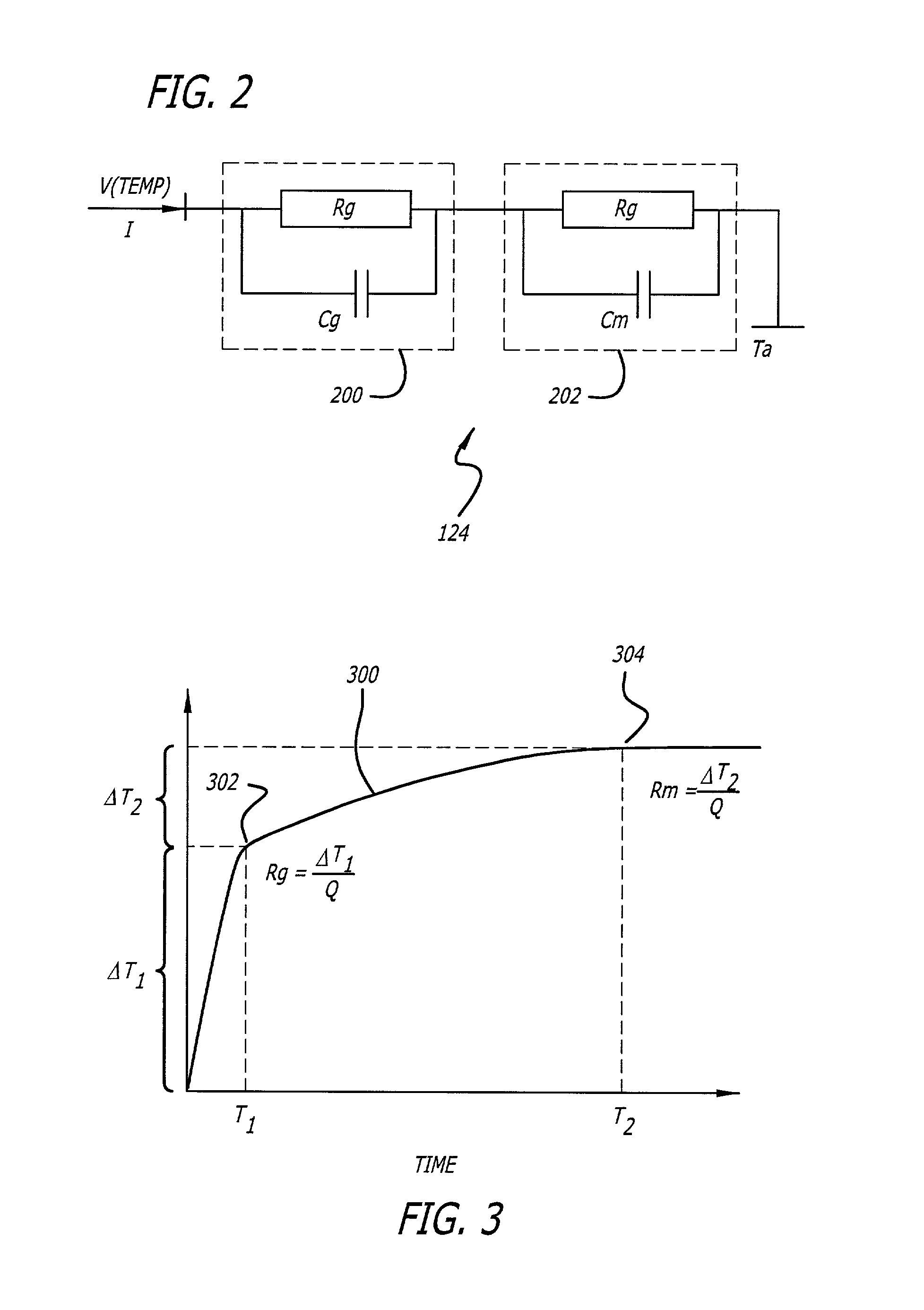System for using digital signal processing to compensate for power compression of loudspeakers
a technology of digital signal processing and loudspeaker, applied in frequency response correction, heat measurement, instruments, etc., can solve the problems of heat generation and dissipation, transducer burn-up, limited power handling capacity of drivers, etc., to reduce the overall audio signal, reduce the cost of manufacturing the integrated system, and reduce the thermal resistance of voice coils
- Summary
- Abstract
- Description
- Claims
- Application Information
AI Technical Summary
Benefits of technology
Problems solved by technology
Method used
Image
Examples
Embodiment Construction
[0024]FIG. 1 illustrates a Thermal Processing Engine block diagram (TPE) 100 that compensates for loss of power due to the power compression effects of the loudspeaker as the temperature of the voice coil and the loudspeaker rises. To compensate for the power compression effect, the invention may predict or estimate the temperature of the voice coil using a thermal-model, and adjusting the estimated temperature accordingly due to the cooling effect as the voice coil moves back and forth in the air gap. The TPE 100 may be shared between a signal processor 102, such as a digital signal processor (DSP), and a host processor 104. The processing that does not need to be done at the audio sample rate may be run in the host processor 104 such as a general purpose micro-controller, where a better floating point math and a better development environment may be available.
[0025]On the input side 108, the signal passes through a Gain Cell 105 and then a Thermal Equalizer 107, both of which woul...
PUM
 Login to View More
Login to View More Abstract
Description
Claims
Application Information
 Login to View More
Login to View More - R&D
- Intellectual Property
- Life Sciences
- Materials
- Tech Scout
- Unparalleled Data Quality
- Higher Quality Content
- 60% Fewer Hallucinations
Browse by: Latest US Patents, China's latest patents, Technical Efficacy Thesaurus, Application Domain, Technology Topic, Popular Technical Reports.
© 2025 PatSnap. All rights reserved.Legal|Privacy policy|Modern Slavery Act Transparency Statement|Sitemap|About US| Contact US: help@patsnap.com



